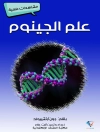THE UPDATED NEW EDITION OF THE POPULAR COLLECTION OF HIGH-RESOLUTION CHROMOSOME PHOTOGRAPHS–FOR GENETICISTS, MAMMOLOGISTS, AND BIOLOGISTS INTERESTED IN COMPARATIVE GENOMICS, SYSTEMATICS, AND CHROMOSOME STRUCTURE
Filled with a visually exquisite collection of the banded metaphase chromosome karyotypes from some 1, 000 species of mammals, the Atlas of Mammalian Chromosomes offers an unabridged compendium of the state of this genomic art form. The Atlas??contains the best karyotype produced, the common and Latin name of the species, the published citation, and identifies the contributing authors. Nearly all karyotypes are G-banded, revealing the chromosomal bar codes of homologous segments among related species. The Atlas brings together information from a range of cytogenetic literature and features high-quality karyotype images for nearly every mammal studied to date.
When the Atlas was first published, only three mammals were sequenced. Today, that number is over 300. Now in its second edition, this book contains extensive revisions and major additions such as new karyotypes that employ G- and C- banding to represent euchromatin and heterochromatin genome composition, new phylogenetic trees for each order, homology segment chromosome information on published aligned chromosome painting. Summaries of the painting data for some species indicate conserved homology segments among compared species. An invaluable resource for today’s comparative genomics era, this comprehensive collection of high-resolution chromosome photographs:
* Assembles information previously scattered throughout the cytogenetics literature in one comprehensive volume
* Provides chromosome information and illustrations for the karyotypes of 300 new species
* Addresses the mandate of the Human Genome Project to annotate the genomes of other organisms
* Serves as a basis for chromosome-level genome assemblies
* Offers a detailed summation of three decades of Zoo Fish (chromosome painting)
* Presents high-resolution photos of karyotypes that represent more than 1, 000 mammal species
Written for geneticists, mammalogists, and biologists, the Atlas of Mammalian Chromosomes offers a step forward for an understanding of species formation, of genome organization, and of DNA script for natural selection.
İçerik tablosu
Acknowledgments l
Contributors li
Foreword 1 by Malcolm A. Ferguson-Smith lviii
Foreword 2 by Denis M. Larkin lxiii
Introduction lxviii
MAMMALIA Time Tree 1
MONOTREMATA Time Tree 2
Order Monotremata 3
MARSUPIALIA Time Tree 6
Order Didelphimorphia 7
Order Paucituberculata 14
Order Microbiotheria 14
Order Dasyuromorphia 15
Order Peramelemorphia 21
Order Notoryctemorphia 22
Order Diprotodontia 22
AFROTHERIA Time Tree 38
Order Afrosoricida
Order Sirenia 53
Order Proboscidea 55
XENARTHRA Time Tree 64
Superorder Xenarthra 65
Order Pilosa
Order Cingulata
EUARCHONTOGLIRES Time Tree 79
Order Scandentia Time Tree 80
Order Dermoptera 84
Order Primates Time Tree 87
Order Rodentia Time Tree 186
LAURASIATHERIA Time Tree 465
Order Eulipotyphla (Insectivora) Time Tree 466
Order Chiroptera Time Tree 502
Order Pholidota Time Tree 703
Order Cetartiodactyla Time Tree 706
Order Perissodactyla Time Tree 858
References 881
Afterword Chromosomes: Much More Than DNA by Jennifer A. Marshall Graves 902
Index 904
Index of Painting Probes 930
Yazar hakkında
EDITORS
ALEXANDER S. GRAPHODATSKY is Head of the Research Department of the Institute of Molecular and Cellular Biology, Siberian Branch of the Russian Academy of Sciences and Novosibirsk State University. He is the author of more than 200 scientific publications on cytogenetics, genome diversity, and evolution of mammals.
POLINA L. PERELMAN is a Research Scientist at the Institute of Molecular and Cellular Biology and at Novosibirsk State University, Russia.
STEPHEN J. O’BRIEN is Director of Research at Nova Southeastern University, USA and Chief Scientific Officer at the Theodosius Dobzhansky Center for Genome Bioinformatics, St. Petersburg State University, Russia. He previously served as Chief of the Laboratory of Genomic Diversity at the National Cancer Institute, USA.












